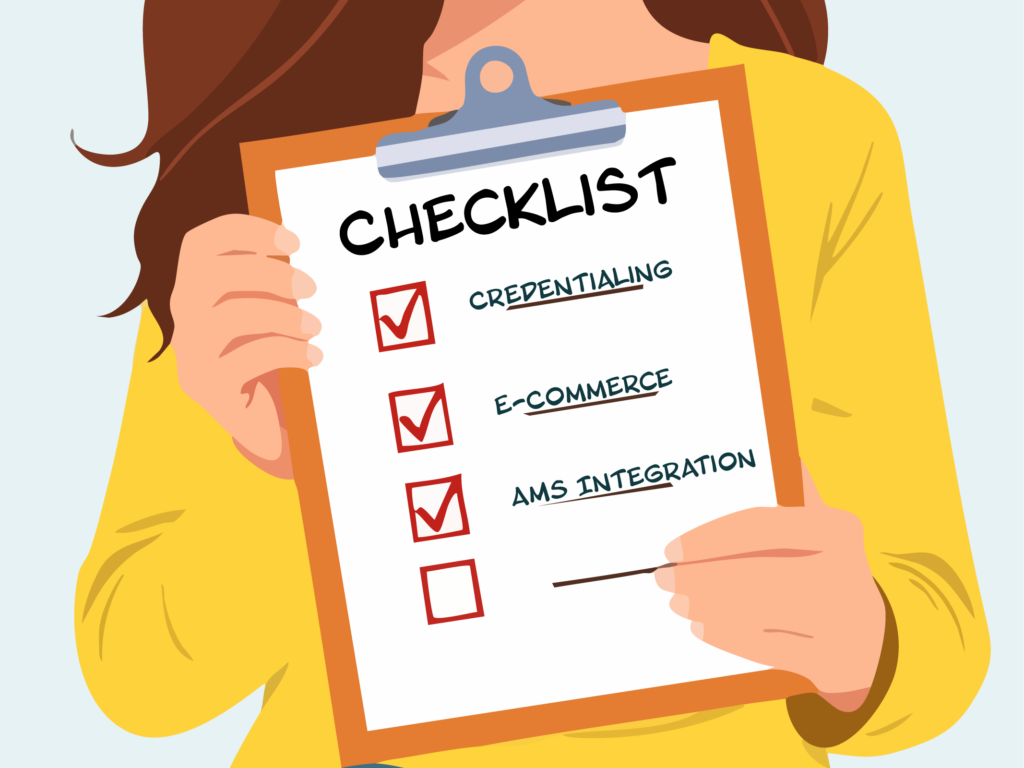
When it comes to learning management systems, one size does not fit all. The corporate world has long been dominated by robust LMS solutions built to serve internal training, compliance tracking, and employee onboarding. However, the association world requires something fundamentally different. Unlike employees, who typically must complete required training, association members voluntarily join, often receiving education as part of their membership benefits.
Historically, associations had to choose between corporate LMS platforms optimized for employee compliance or academic LMS solutions built for higher education institutions. Neither choice is ideal. Associations often experienced frustration and suboptimal member experiences.
In recent years, cloud technology has transformed the LMS market. Associations now have specialized solutions tailored specifically to their unique needs. These solutions address challenges such as voluntary user engagement, complex credentialing processes, and robust e-commerce requirements.
What Makes Association LMS Different?
Associations operate in a market where learning is elective rather than mandatory. Members seek education to fulfill professional credential requirements, upskilling, and advance careers. Unlike corporations, associations must actively market their educational offerings and clearly demonstrate their value.
Associations require advanced e-commerce functionalities beyond simple transactions. They need flexible pricing models such as member and non-member rates, discounted bundles, and organizational pricing. Additionally, they require intuitive marketing capabilities to attract and retain learners. These features are essential to an effective association LMS.
Another critical difference is integration with Association Management Systems. Corporate LMS platforms typically integrate with Human Resources Information Systems for managing user profiles and organizational structures. Association LMS integrations must handle more detailed data, including membership levels, organizational memberships, credential records, continuing education, purchase history, and event registrations. These integrations are often more complex and require real-time synchronization for a seamless user experience.
Credentialing and Continuing Education Integration
Credentialing is vital to associations. Historically, credentialing and continuing education were separate. Today, association LMS solutions integrate both seamlessly. Professionals can manage certifications, track continuing education credits, and renew credentials through a single platform. This integration streamlines processes, enhances member satisfaction, and encourages ongoing engagement.
The best LMS solutions create a seamless experience from the initial credential application to ongoing education and certification maintenance. This approach helps associations maintain member engagement over time.

A checklist of key features for association learning management systems, including credentialing, e-commerce, and AMS integration.
A Simplified and Effective LMS Selection Process
Navigating numerous LMS vendors can be overwhelming. A simplified yet effective four-step approach can streamline this process:
- Plan Strategically: Define clear business objective(s) such as increasing non-dues revenue through commerce or increasing member engagement. Associations should approach their educational offerings as profit centers, not just member benefits.
- Define Requirements Clearly: Specify your must-haves, including e-commerce capabilities, credentialing, AMS integration, and continuing education requirements. Because no single product does it all, prioritizing what’s most important helps you quickly identify platforms worth evaluating and avoid wasting time on ones that fall short.
- Evaluate Shortlisted Vendors Closely: After narrowing down the qualified vendors, thoroughly evaluate detailed demos with an emphasis on learner experience. How easy is it to launch a course or find a particular course in the catalog? Does it require multiple clicks? Remember, this is elective training so member tolerance will be low.
- Product Roadmap: Ask for and evaluate each vendor’s future development roadmap. Ensure the vendor plans align with your long-term objectives, including upcoming features, upcoming integrations, and ongoing support improvements. This step helps associations ensure the LMS will continue meeting their evolving needs.
- Assess Customer Support: Evaluate the quality, availability, and responsiveness of each vendor’s customer support. Will you have a dedicated customer success manager? Strong support is crucial for addressing issues quickly, minimizing downtime, and ensuring continuous, smooth operations. Confirm the vendor offers various levels of support necessary to meet your organization’s ongoing needs.
Professional Services: The Secret Sauce
Professional services provided by LMS vendors are often overlooked but essential. While cloud technology has made it easier for LMS providers to enter the market, not all vendors offer robust professional services. Associations often lack extensive in-house IT resources, making vendor-provided services essential for complex implementations, data migration, and integrations.
The ideal LMS partner offers strategic advice, implementation assistance, data migration expertise, integration planning, and ongoing support specifically tailored to associations. Successful LMS implementations typically occur when vendors act as strategic partners rather than just software providers.
Key Takeaways for Associations
Associations should view their LMS as a strategic tool to enhance member engagement, generate revenue, and foster long-term growth. A corporate LMS might initially seem adequate, but the complexities of member engagement, advanced e-commerce needs, credentialing, and AMS integration demand specialized solutions.
Ultimately, the ideal association LMS is more than just a learning platform. It’s a strategic technology solution that empowers associations to attract, retain, and engage members, creating lasting value and driving their mission forward.